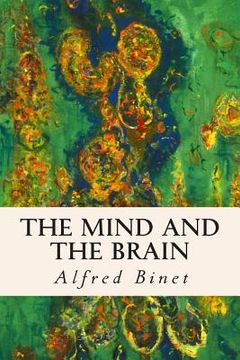Synopsis "The Mind and the Brain"
The Mind and the Brain is an Alfred Binet psychology classic and a prolonged effort to establish a distinction between what is called mind and what is called matter. Nothing is more simple than to realise this distinction when you do not go deeply into it; nothing is more difficult when you analyse it a little. At first sight, it seems impossible to confuse things so far apart as a thought and a block of stone; but on reflection this great contrast vanishes, and other differences have to be sought which are less apparent and of which one has not hitherto dreamed. Alfred Binet ( July 8, 1857 - October 18, 1911) was a French psychologist who invented the first practical IQ test, the Binet-Simon test.[2] In 1904, the French Ministry of Education asked psychologist Alfred Binet to devise a method that would determine which students did not learn effectively from regular classroom instruction so they could be given remedial work. Along with his collaborator Théodore Simon, Binet published revisions of his test in 1908 and 1911, the last of which appeared just before his death. In 1899, Binet was asked to be a member of the Free Society for the Psychological Study of the Child. French education changed greatly during the end of the nineteenth century, because of a law that passed which made it mandatory for children ages six to fourteen to attend school. This group to which Binet became a member hoped to begin studying children in a scientific manner. Binet and many other members of the society were appointed to the Commission for the Retarded. The question became "What should be the test given to children thought to possibly have learning disabilities, that might place them in a special classroom?" Binet made it his problem to establish the differences that separate the normal child from the abnormal, and to measure such differences. L'Etude experimentale de l'intelligence (Experimental Studies of Intelligence) was the book he used to describe his methods and it was published in 1903. Development of more tests and investigations began soon after the book, with the help of a young medical student named Theodore Simon. Simon had nominated himself a few years before as Binet's research assistant and worked with him on the intelligence tests that Binet is known for, which share Simon's name as well. In 1905, a new test for measuring intelligence was introduced and simply called the Binet-Simon scale. In 1908, they revised the scale, dropping, modifying, and adding tests and also arranging them according to age levels from three to thirteen. In 1904 a French professional group for child psychology, La Société Libre pour l'Etude Psychologique de l'Enfant, was called upon by the French government to appoint a commission on the education of retarded children. The commission was asked to create a mechanism for identifying students in need of alternative education. Binet, being an active member of this group, found the impetus for the development of his mental scale. Binet and Simon, in creating what historically is known as the Binet-Simon Scale, comprised a variety of tasks they thought were representative of typical children's abilities at various ages. This task-selection process was based on their many years of observing children in natural settings. They then tested their measurement on a sample of fifty children, ten children per five age groups. The children selected for their study were identified by their school teachers as being average for their age. The purpose of this scale of normal functioning, which would later be revised twice using more stringent standards, was to compare children's mental abilities relative to those of their normal peers (Siegler, 1992).

